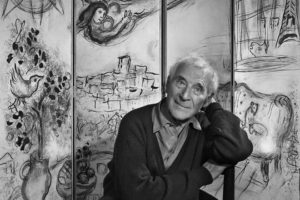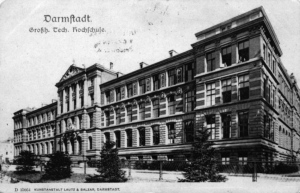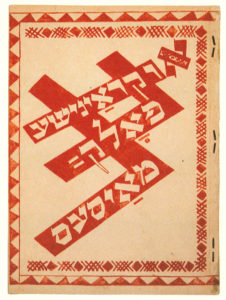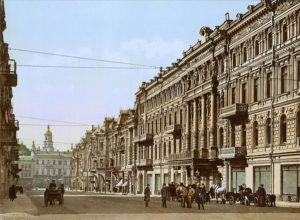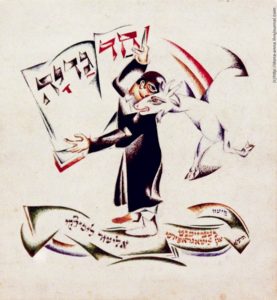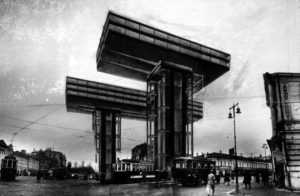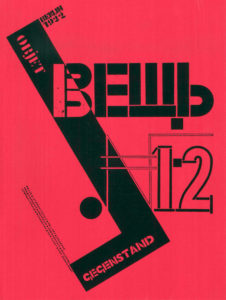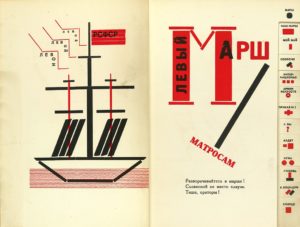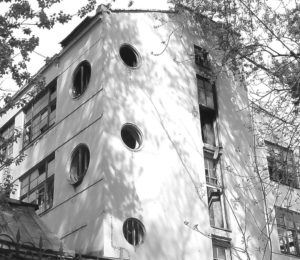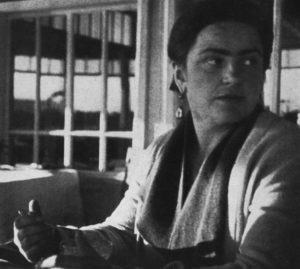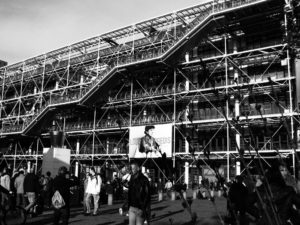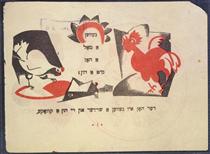El Lissitzky was born into the family of a tradesman, artisan and entrepreneur. Soon he moved with his parents to Vitebsk, attended classes at the private Painting School of Yu Pan, whose student was M. Chagall.
1890 - 1941
El Lissitzky
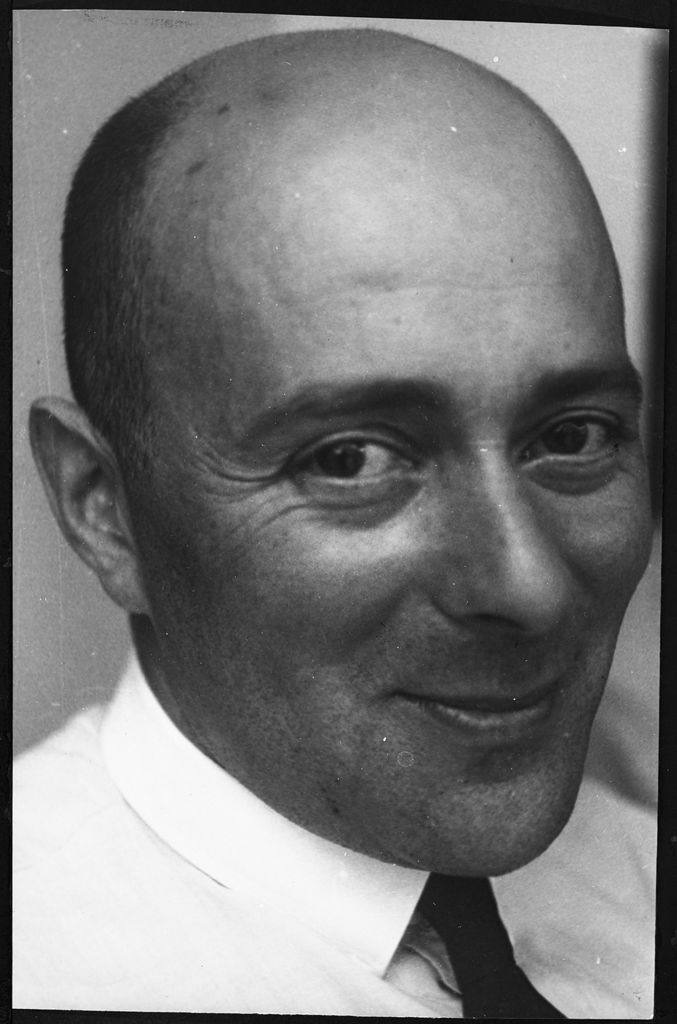
description
A Russian artist of Jewish origin, a vivid representative of the avant-garde of the first third of the 20th-century art. El Lissitzky is rightly classified as a “pioneer” in exposition design. His famous prouns (short for “projects of the approval of the new”) conquered Europe – the “Prouns’ Room” was created in Berlin, and the principles developed by Lissitzky were used by such artists as V. Tatlin, P. Mondrian, etc.
The role of Lissitzky in building effective bridges between the Western avant-garde and Russian post-revolutionary art in the 1920s was significant. Collaborating with many art magazines published in Berlin and Amsterdam, Lissitzky influenced the development of the international graphic design of the XX century and a whole generation of European artists.
Lissitzky believed that the artist is an agent of social changes, who seeks and implements a new expressive language through posters with a bright visual effect, easily understood by all social layers in all countries of the world. The propaganda side of many of his works does not overshadow what the artist brought into the use of forms, solid colours, and their organization in the space of the work. His creative concept developed the branch when the totality of the work is a unique style that embodies painting, architecture and sculpture.
The artist was an active member of the Jewish national cultural revival, organizer and participant in exhibitions, illustrator of Jewish literature. A valuable contribution to the development of art was his essay “Memories of the Mogilev Synagogue” published in 1923 in Berlin, the only theoretical work by Lissitzky dedicated to Jewish decorative art.
Key ideas:
– The early experiments of El Lissitzky, when he did not use games with three-dimensionality of the image in his paintings, are full of simple geometry. They combined the style of cubofuturism with the style of a popular print, which was most evident later in illustrations, book covers, and poster art.
– Working in Vitebsk at the invitation of M. Chagall, the artist invented and began to develop his version of suprematist three-dimensional compositions, which he called projects of the approval of the new – “prouns”. He used many prouns in graphics. Later the lithographs-prouns were published in Moscow (1921), as well as in Hanover (1923, “Kestner’s Folder”).
– According to the author, prouns synthesized the techniques of Suprematism and Constructivism, served as a bridge between painting and architecture. Later, the famous “horizontal skyscrapers”, projects of pavilions and theater models, decorative and spatial exhibition interiors, poster-book and furniture design with a fundamentally new composition “grew” from them.
– El Lissitzky actively used national Jewish themes and symbols. For example, he created a number of avant-garde drawings for the Jewish folk tale “Goat”. In posters, illustrations and other graphics, he often used Hebrew, usually combining it with the letters of the Russian and Latin alphabets.
– For a holistic understanding of the El Lissitzky phenomenon in installations and architecture, three main aspects are essential. The first one is the connection with the topic of spatial constructions: voluminous works are perceived not from one angle but have to be observed from all sides. Unfolding in space, the designs acquire new meanings. The second feature is an active visual and plastic dialogue of the author with other artists of that era. The third aspect of art is called the need for touch. Lissitzky was interested in touch, as well as in the whole world of things with the properties of specific materials from which it was “made”.
1890
1909
1917
1919
1920
1921
1922
1923
1925
1927
1929
1932 - 1940
1941
El Lissitzky was born
He entered the architecture department of the Higher Darmstadt Technical School
Having graduated from the Smolensk Real School, he entered the architecture department of the Higher Darmstadt Technical School (Germany). He traveled to France and Italy. After returning, he entered the Polytechnic Institute, evacuated from Riga to Moscow.
He participated in collective exhibitions of this society in Moscow
Becoming a member of the Jewish Society for the Promotion of Arts, he participated in collective exhibitions of this society in Moscow. Using traditional Jewish symbols, he illustrated books published in Yiddish, including books by contemporary Jewish authors.
He went to Vitebsk
Arriving in Kyiv, he played an important role in the endeavours of the local Culture League. Decorated books “Prague Legend” and “Goat” published in Kyiv. In the same year, he went to Vitebsk and headed the workshops (architectural and printed graphics) at the People’s Art School, run by M. Chagall. While working at an architectural bureau, he participated in an ethnographic expedition studying Jewish artifacts on the Dnipro River.
“Yidisher Folks-Farlag”
Created a stamp for the Jewish national publishing house “Yidisher Folks-Farlag” (Kyiv), signed a contract with it to illustrate 11 children’s books. He prepared reproductions of murals of the ancient synagogue made in Mogilev for publication, wrote an accompanying article in Yiddish (was published in Berlin in 1923), took the pseudonym El Lissitzky. Returning to Moscow, he taught at state workshops, worked at the Institute of Artistic Culture.
He was sent to Berlin
He was sent to Berlin, where he actively established contacts between European innovators and the post-revolutionary Russian avant-garde. He was in close contact with a group of Berlin Dadaists, representatives of the Bauhaus, the Dutch association “Style”, and thus became a participant in Constructivism, a pan-European art movement.
He published the magazine "The Thing"
He published the magazine “The Thing” together with I. Ehrenburg (in three languages), collaborated with the magazines “Broome”, and “G” (Berlin), “De Stil” (Amsterdam).
Created “The Room of the Proun”
In Berlin, the book “Mayakovskiy. For voice” was published; Lissitzky applied there his methods of visual and spatial design for print media. Created “The Room of the Proun” in Berlin. Held exhibitions in Dresden and Hanover, where he met C. Schwitters, with whom he published the magazine “Merz” (Amsterdam).
The solo exhibition of the artist was held in Dresden
A solo exhibition of the artist was held in Dresden. Lissitzky returned to Moscow and took the position of professor at the State Free Workshops. A year later, he became a member of the Association of New Architects.
Married German artist S. Kuppers
Married German artist S. Kuppers, who had moved to Moscow. The “Abstract Cabinet” was designed at the Hanover Landes Museum according to the project of Lissitzky. A year later, in collaboration with Meyerhold, he performed a theater project for the production of “I Want a Child”.
Participated in a collective exhibition at the Museum of Decorative Arts in Zurich
Participated in a collective exhibition at the Museum of Decorative Arts in Zurich, created a poster for it (the original was purchased in 1977 for the collection of the Pompidou Center, Paris). He worked as a leading architect of the Central Park of Culture in Moscow. In the pre-war decade, he continued to work actively in the field of magazine and book design.
He was an artist-designer of the magazine "USSR at a Construction Site"
He was an artist-designer of the magazine “USSR at a Construction Site”.
El Lissitzky died
El Lissitzky died 
El Lissitzky
On Artist
flow
Constructivism
Cubofuturism
Neo-primitivism
Suprematism
friends
Mark Shagal
Kazimir Malevich
artists
Yudel Pan
Kurt Schwitters
By Artist
flow
Constructivism
friends
Vladimir Tatlin
Vasily Dmitrievich Ermilov
Vadim Georgievich Meller
artists
Alexander Rodchenko
Lisitskaya-Kuppers Sofya Khristianovna
Frank Stella
Pete Mondrian
Биография – Jan 8, 2019
Биография – Jan 8, 2019

